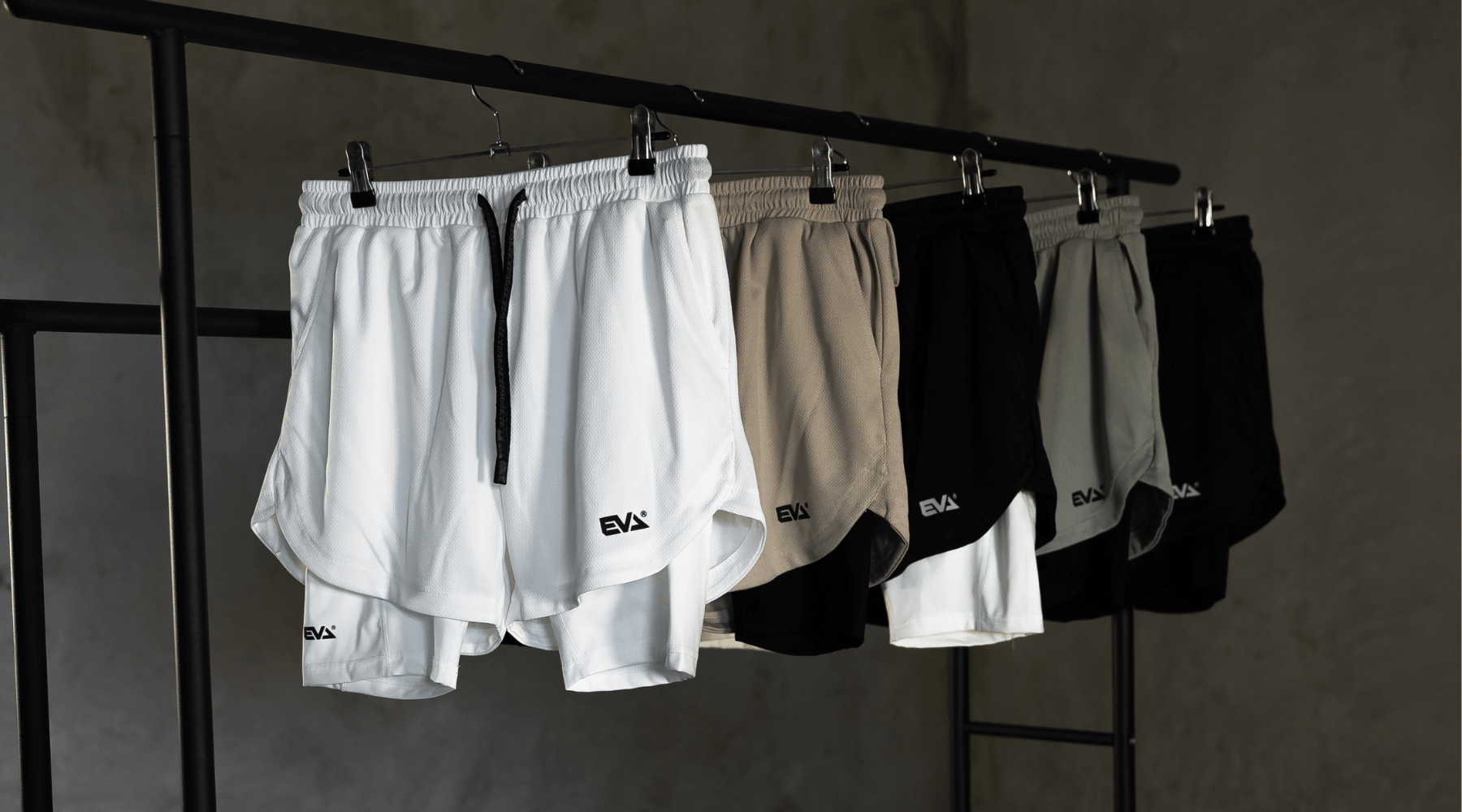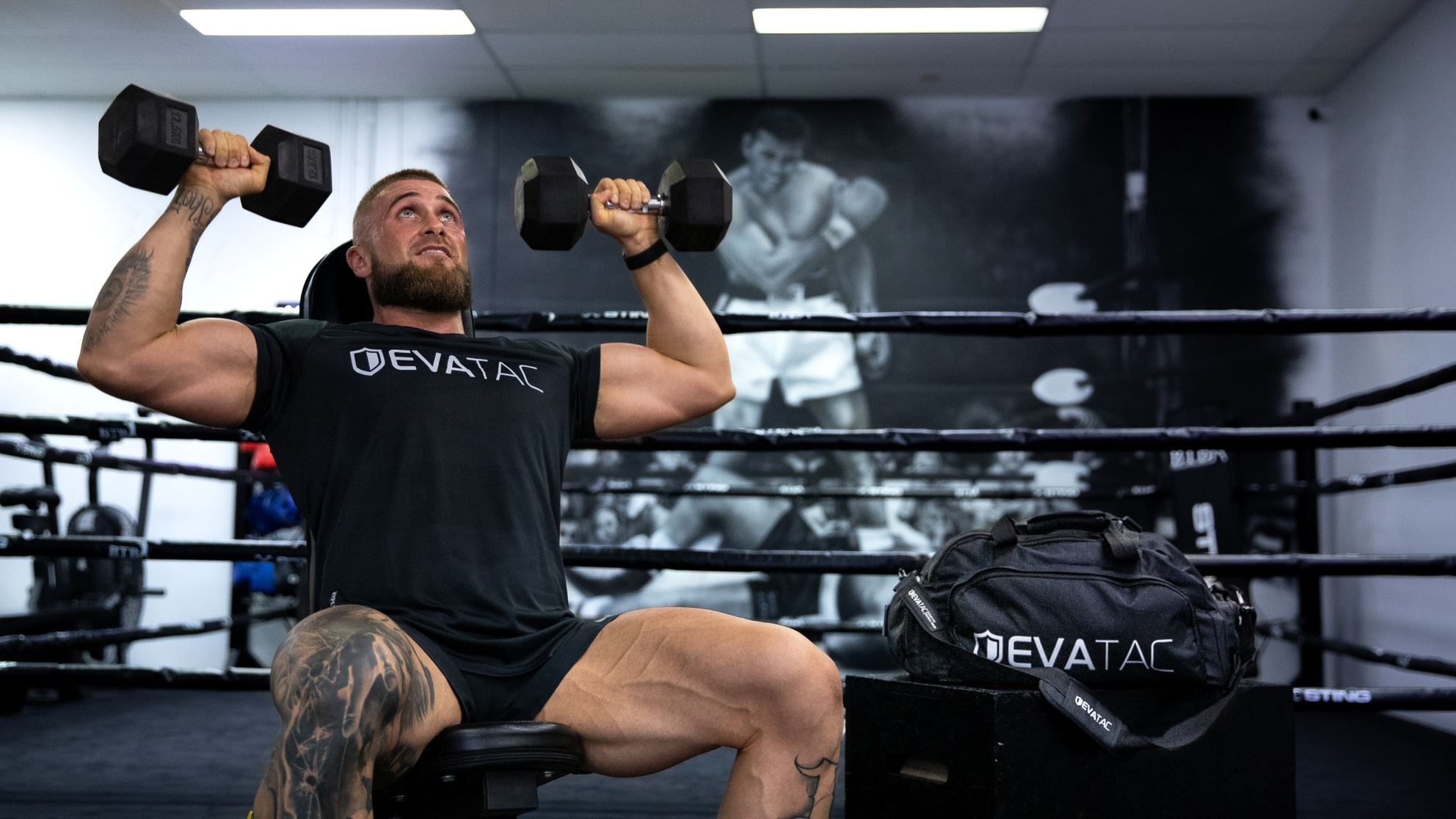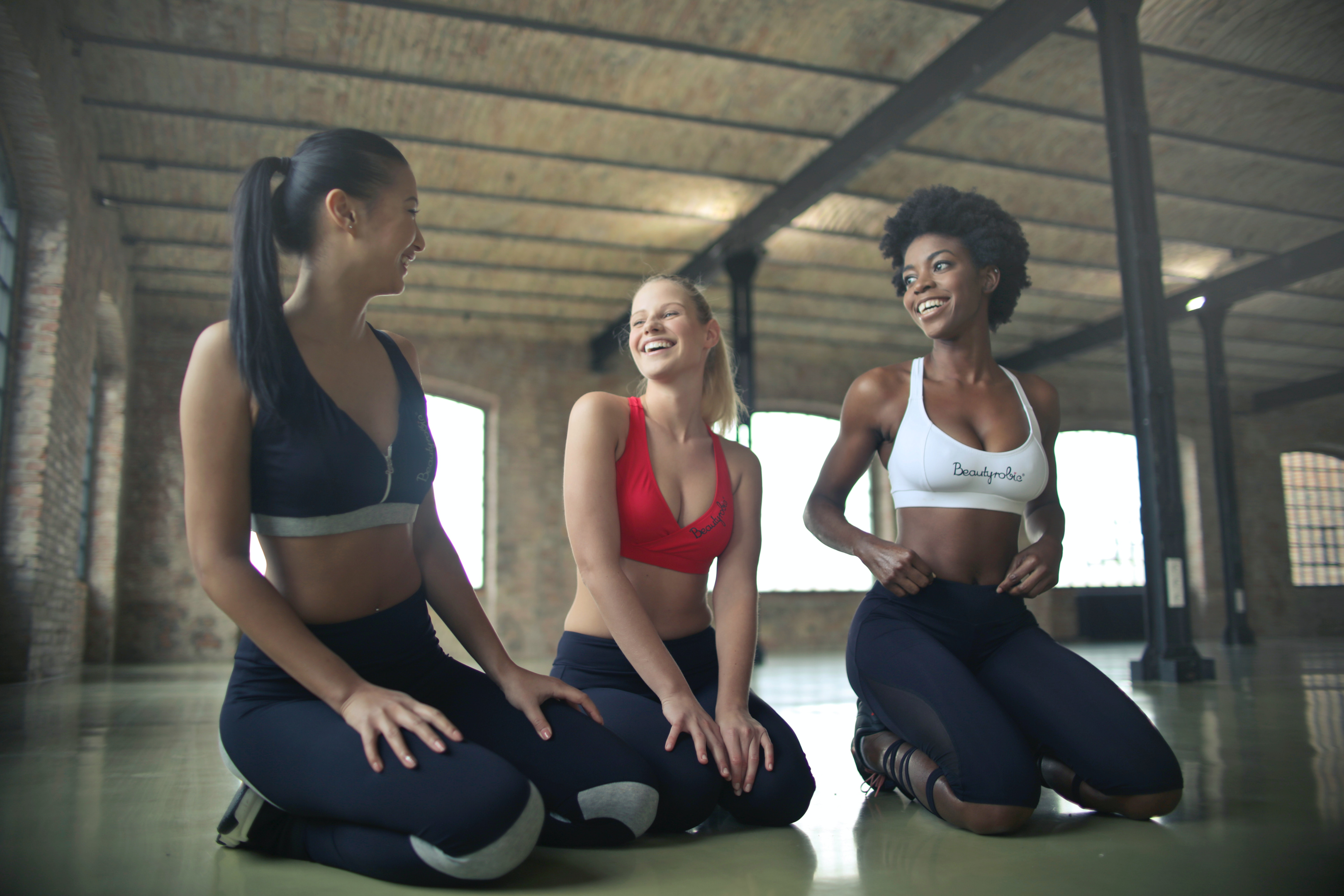Article: The History of Sportswear and Its Evolution

The History of Sportswear and Its Evolution
As a fitness enthusiast, you understand the importance of having the right sportswear for your workouts. However, sportswear has come a long way from its humble beginnings as simple loose clothing worn during physical activities.
Today, it encompasses various innovative designs, materials, and technologies that enhance performance, comfort, and style. In this guide, we will delve into the evolution of sportswear, tracing its history, exploring modern trends, and providing valuable tips for choosing the perfect gear for your fitness journey.

Ancient Origins: From Nudity to Ceremonial Dress
In the 19th century, the development of sportswear gained momentum, driven by the rise of organized sports and the recognition of the importance of appropriate attire for athletic activities. As sports became more structured and competitive, athletes and participants started to realize the need for specialized clothing that would enhance performance and provide comfort.
Thomas Hancock's Contributions
During this period, influential figures emerged who contributed significantly to the evolution of sportswear. One notable figure was Thomas Hancock, an English inventor who developed vulcanized rubber. This breakthrough in material technology led to the creation of waterproof and durable sportswear, such as rubberized raincoats and boots, which were particularly useful for outdoor activities like hiking and mountaineering.
Joseph-Marie Jacquard's Textile Technology
Another key advancement came with the introduction of knitted fabrics. In 1816, French inventor Joseph-Marie Jacquard revolutionized the textile industry by inventing the Jacquard loom, which enabled the first mass production of intricate patterns and designs on fabric. This innovation allowed for the creation of knitted sportswear, such as jerseys and sweaters, which provided warmth and flexibility for athletes in colder climates.
Sportswear as a Gender-Inclusive Industry
The 19th century also witnessed the establishment of the first sportswear companies, catering to the growing demand for specialized athletic attire. Redfern & Sons, founded in 1847 in Britain, gained recognition for their production of comfortable and functional sports clothing for women. The company paved the way for the inclusion of women in sports and helped shape the future of sportswear as a gender-inclusive industry.
As the 19th century progressed, sportswear evolved beyond functionality and began to reflect fashion trends of the time. The aesthetics of sportswear started to incorporate elements of Victorian fashion, with corsets, bustles, and high collars making their way into women's sportswear. This fusion of fashion and function marked a significant shift in the perception of sportswear, making it more acceptable as everyday clothing.
With the foundation laid in the 19th century, sportswear continued to evolve and adapt to the changing needs and preferences of athletes and fitness enthusiasts. the second world war The 20th century would bring even greater advancements in design, fabric technology, and the integration of sportswear into mainstream fashion, setting the stage for the diverse and innovative sportswear options we have today.
Fashion and Function in the 20th Century
In the 20th Century, we witnessed significant advancements in sportswear design, driven by changes in fashion trends and improvements in fabric technology. In the 1920s, notable developments included the introduction of zip-up windbreakers, anoraks, and the shift towards more leisurely sports participation.
Suzanne Lenglen's Bold Fashion Statement
Suzanne Lenglen, a French tennis player, made a bold fashion statement on the tennis court. Breaking away from the traditional dress and hat worn by women players, Lenglen opted for tennis wear with a shorter skirt and a headband, showcasing a more liberated and athletic look.
Her fashion choices not only allowed for better freedom of movement but also sparked a trend that transcended the world of sports. Suddenly, shorter skirts became fashionable attire for women beyond the tennis court, blurring the lines between sportswear and everyday fashion.
The Impact of Coco Chanel
Coco Chanel, known for her influential contributions to the late nineteenth century and fashion industry, also played a significant role in the the twentieth century and evolution of sportswear. In the 1920s, she introduced sports clothing for women in France, which gained international popularity through the pages of American fashion magazine Harper's Bazaar.
Chanel's designs incorporated comfort, functionality, and a touch of elegance, paving the way for the concept of "sport chic." Her innovative use of jersey fabric, a stretchy and breathable material, brought a new level of comfort and style to sportswear.
Bruce Lee's Tracksuit as Casual Wear
As the 20th century progressed, sportswear continued to adapt to the changing cultural landscape. The 1970s marked a shift in sportswear fashion, as designers like Tommy Hilfiger and Ralph Lauren emerged, making their mark on the industry.
The tracksuit became a symbol of a greater movement in athletic fashion, propelled by its association with icons like Bruce Lee. Its popularity soared, and tracksuits became a staple of casual athletic wear.
The Birth of Athleisure and Yoga Pants
In the 1980s, a significant trend emerged that blurred the boundaries between sportswear and everyday fashion: athleisure. This fashion movement embraced the fusion of athletic apparel and streetwear, combining comfort, functionality, and style. Gym wear, such as leggings, hoodies, and sneakers, became fashionable attire beyond the gym, reflecting a more relaxed and active lifestyle.
Today, sportswear continues to evolve, with a focus on performance-enhancing features, sustainability, and technological advancements. Fabrics engineered to wick away sweat, regulate body temperature, and provide compression support have become standard in sportswear.
Fashion Icons and Enduring Trends
The 1970s to the 2000s witnessed a significant shift in sportswear fashion, with influential designers like Tommy Hilfiger and Ralph Lauren leaving their mark on the industry. The tracksuit, popularized by icons like Bruce Lee, became an iconic athletic look, while yoga pants gained popularity among women practicing yoga and became a streetwear staple.
In addition, the introduction of athleisure further blurred the line between sportswear and everyday fashion, making it acceptable to wear gym attire outside the fitness setting.
Stan Smith, Adidas, and the Classic Stretchy Tracksuit
During this period, certain fashion icons played a pivotal role in shaping sportswear trends and creating enduring styles. One notable example is the legendary tennis player Stan Smith, who collaborated with Adidas to create the iconic Stan Smith tennis shoes in 1971.
Originally named after the French tennis player Robert Haillet, the shoes were later renamed after Stan Smith, the top-ranked tennis player of that time. These shoes gained immense popularity and continue to be a timeless classic worn by people of all ages and backgrounds.
Tommy Hilfiger and Ralph Lauren's Sophisticated Sportswear Designs
In addition to footwear, sportswear in the late 20th century saw the emergence of iconic brands that became synonymous with athletic fashion. Tommy Hilfiger and Ralph Lauren, both renowned fashion designers, made significant contributions to the sportswear industry.
Tommy Hilfiger's signature preppy style and Ralph Lauren's classic American aesthetic resonated with consumers, elevating sportswear to a new level of sophistication and popularity. Their designs reflected the fusion of sportswear and high fashion, offering a range of stylish and versatile clothing options for fitness enthusiasts.
Choosing the Right Sportswear: Key Considerations

The right sportswear is crucial for optimal comfort, performance, and style during workouts. Consider the following factors when choosing your fitness apparel:
-
Fabric Technology: Look for moisture-wicking fabrics like polyester and nylon that keep you dry and comfortable during intense workouts.
-
Fit and Comfort: Choose sportswear that provides a snug yet comfortable fit, allowing for a full range of motion. Look for flat seams and tag less designs to minimize irritation and chafing.
-
Breathability and Ventilation: Opt for sportswear with mesh panels or strategically placed ventilation to enhance breathability and keep you cool during workouts.
-
Durability and Longevity: Invest in high-quality sportswear that can withstand frequent use and maintain its shape over time. Look for reinforced stitching and durable fabrics.
-
Style and Aesthetics: While functionality is critical, choose sportswear that reflects your style and makes you feel confident. Experiment with colours, patterns, and designs that motivate you to push harder during your workouts.
Must-Have Sportswear Essentials for Different Activities
Every fitness enthusiast has unique preferences based on their preferred activities. To ensure maximum comfort, performance, and protection, it's essential to wear the appropriate sportswear for each activity. Properly fitting gear can help you move better and perform at your best. Here are some essential sportswear items tailored to different types of workouts:
Running
For avid runners, investing in proper running shoes is crucial to ensure comfort, support, and injury prevention. Look for lightweight shoes with cushioning and a breathable upper for enhanced performance.
Additionally, moisture-wicking socks like the EVATAC Essential Crew Gym Socks and moisture-wicking shirts like the EVATAC Signature Gym Shirt are essential to keep you dry and comfortable during those intense sweat sessions.
Yoga/Pilates
Flexibility and freedom of movement are key in yoga and Pilates. Opt for form-fitting, stretchy leggings or yoga pants that allow you to move effortlessly through poses. Look for tops made from moisture-wicking fabrics that provide breathability.
For added support and comfort, consider a sports bra with a built-in shelf bra or adjustable straps. Additionally, grip socks or barefoot shoes can provide stability and prevent slipping during yoga or Pilates sessions.
High-Intensity Interval Training (HIIT)
HIIT workouts require sportswear that can withstand intense movements and keep you cool. Look for moisture-wicking shorts or leggings that offer a snug fit and allow freedom of movement.
Pair them with a sweat-wicking, quick-drying shirt to stay comfortable and dry. Breathable, lightweight shoes with good traction are essential for the quick lateral movements and agility required in HIIT workouts.
Weightlifting
When it comes to weightlifting, the focus is on stability and support. Invest in a pair of weightlifting shoes with a flat, sturdy sole and straps like the Evatac Wrist Straps for added security. Compression shorts or leggings can provide muscle support and reduce muscle fatigue.
A fitted, moisture-wicking shirt or tank top completes the ensemble, allowing you to focus on your lifts without any distractions.
Remember, choosing the right sportswear for your specific activities can enhance your performance, provide comfort, and boost your confidence. It's important to prioritize functionality, quality, and fit when building your sportswear collection, ensuring that each piece supports your unique fitness goals and needs.
By understanding the evolution of sportswear and selecting the appropriate attire for your workouts, you can optimize your fitness experience and elevate your performance to new heights.
Embrace the rich history, innovative technologies, and diverse styles that sportswear has to offer as you embark on your fitness journey. Dress for success and let your sportswear empower you to unleash your full athletic potential. The right sportswear isn't just clothing; it's a catalyst for achieving greatness in the world of fitness.
The Future of Sports Clothing: Innovations on the Horizon

Looking ahead, the future of sportswear appears promising, with continued advancements in technology, sustainability, and design. As fitness becomes an integral part of people's lives, there is a growing demand for sportswear that not only performs well but also reflects personal style and values.
Brands are exploring innovative materials and manufacturing techniques to create sportswear that maximizes performance, enhances comfort, and reduces environmental impact. From smart fabrics with integrated sensors to customizable and adaptive designs, the possibilities considered sportswear now are endless.
The evolution of sportswear through the ages showcases its transformation from basic and practical clothing to a dynamic and influential fashion category. From ancient civilizations to the modern era, sportswear has evolved in response to changing needs, fashion trends, and technological advancements.
It has become an integral part of the fitness enthusiast's wardrobe, offering a balance of functionality, style, and comfort. As we move forward, sportswear will continue to adapt and innovate, empowering individuals to pursue their fitness goals with confidence and inspiring a new generation of fashion-forward athletes.
The world of sportswear, continues to evolve, embracing technological advancements to enhance performance and comfort. Here are a few exciting developments to look forward to:
-
Intelligent Fabrics: Integrating sensors and microchips into sportswear to monitor biometric data such as heart rate, temperature, and muscle activation.
-
Sustainable Materials: Increasing the use of eco-friendly and recycled fabrics to reduce the environmental impact of sportswear production.
-
Customization: Tailored sportswear options, including 3D-printed apparel and personalized designs, to cater to individual preferences and body shapes.
-
Augmented Reality (AR): The incorporation of AR technology in sportswear to provide real-time feedback on posture, technique, and performance, enhancing the training experience.
-
Temperature Regulation: Advancements in fabric technology that adapt to body temperature fluctuations, providing optimal thermal comfort during workouts.
Wrapping Up

The evolution of sportswear showcases the remarkable progress made in design, functionality, and style over the years. Sportswear has become an integral part of the fitness enthusiast's wardrobe from ancient origins to modern innovations.
You can make informed choices when selecting your sportswear essentials by considering factors such as fabric technology, fit, breathability, and durability. Embrace the future of sportswear with smart fabrics, sustainable materials, customization options, AR integration, and temperature-regulating innovations.
Stay comfortable, perform at your best, and express your unique style with the perfect sportswear as you embark on your fitness journey.



